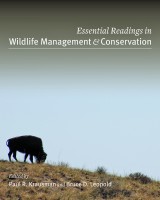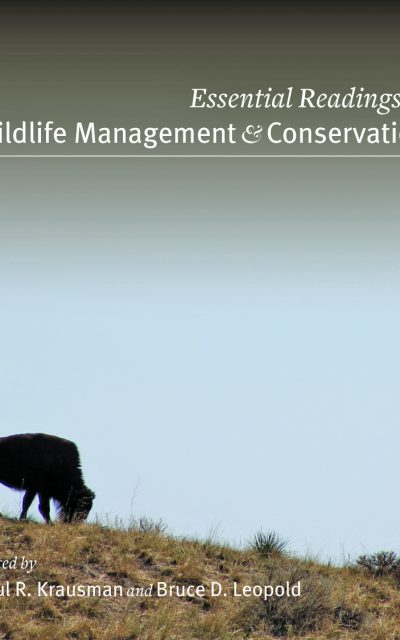 Editors: Paul R. Krausman and Bruce D. Leopold
Editors: Paul R. Krausman and Bruce D. Leopold
Publisher: Johns Hopkins University Press – 682 pages
Book Review by: Sonu Chandiram
The reader may first ask a number of questions relating to the title of this textbook meant for college courses on wildlife management, e.g. what is wildlife; what is management relating to wildlife; and what is conservation. So before writing an evaluation of this book and its values, let me get these questions answered, as provided by its two editors.
Wildlife as defined by them refers to “any free-ranging vertebrate or invertebrate organism;” management is “any active or passive action that addresses an animal’s reproduction or survival;” and conservation is “maintaining sustainable natural resources for the well-being of the earth and its peoples.” We might change the last word of this definition to ‘inhabitants’ from ‘peoples’ because that includes animals.
This book contains 42 of the most important articles (considered “classics”) in wildlife management that Krausman and Leopold suggest that every student of wildlife should read. These were written by 65 wildlife experts over the course of nearly 100 years from 1912 to 2010.
The 1912 article by V.E. Shelford was entitled Ecological succession. IV. Vegetation and the control of land animal communities; and the 2010 piece by J.F. Organ, S.P. Mahoney, and V.Geist was: Born in the hands of hunters: the North American Model of Wildlife Conservation.
These writings cover almost all aspects of the subject of wildlife and their management, including ethics. The editors explain at the beginning of each essay why it is important and list a number of papers that inspired it. At the end of each article is a list of sources of additional information under the “Related Reading” heading.
The articles in this book are organized into four sections or themes, mainly:
- The philosophical roots of wildlife management
- Animals, ecology and populations
- Habitat
- Human dimensions of wildlife management
This book, containing the most important and essentially, foundational writings on wildlife, can serve the needs of not only college-level undergraduate students as a semester-long introductory course, but also graduate students in the form of a seminar. It can also be used by high school teachers as the basis of required course in science or as an elective. And of course, it is very useful to academicians and professionals in different aspects wildlife management.
The editors used several criteria in choosing the 42 articles for this book from among the 120 they reviewed. One of those criteria was how often that article had been cited by others. It is interesting to note that one of those articles was cited 15,562 times at the time of the writing of this book sometime before its publication in 2013.
With that article The Tragedy of the Commons, written by Garrett Hardin in 1968, we learn the all-important lesson that we human beings must never think that we have unlimited resources. When we overuse what is available to us, all of us pay the tragic price of exhaustion of our resources (animals, fish, clean air, land, water, etc.) and eventually, death and extinction of the human species. This is a must-read essay in this book.
By reading some of the contributions in this book, I learned that wildlife is much more important to us than I ever thought before in maintaining biological and ecological balance in our total environment. There is a lot of crucial information in it that I think most of us do not even think about.
In order for us not to be caught by surprises, we need to learn about wildlife, and this is a very good book on it. The editors Krausman and Leopold have made an immense contribution to society by putting this book together. Now it is up to all to read and benefit from it.
Paul R. Krausman is the Boone and Crockett Professor of Wildlife Conservation at the University of Montana and past president of The Wildlife Society.
Bruce D. Leopold is professor and head of the Department of Wildlife, Fisheries, and Aquaculture at Mississippi State University. He is executive director of the Center for Resolving Human-Wildlife Conflicts and past president of The Wildlife Society.







